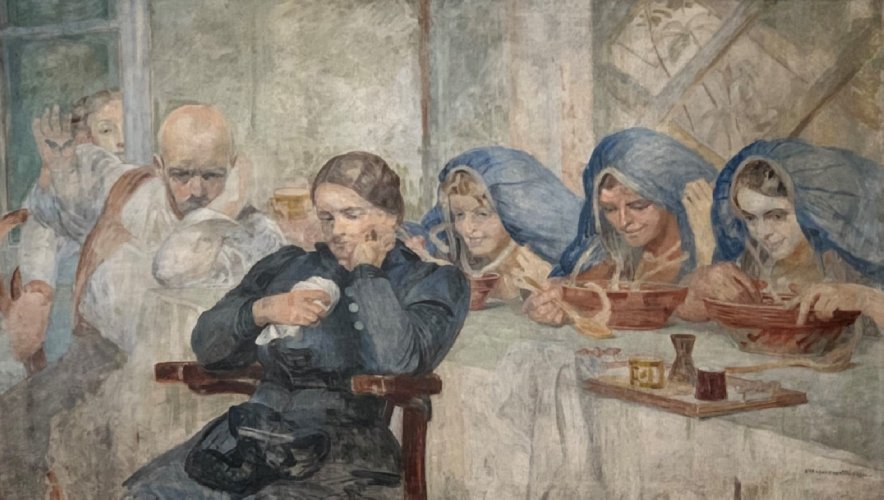Description:
Jack Malczewski (1854-1929) was deeply devoted to art and romantic literature, particularly the poetry of Juliusz Słowacki, which he inherited from his family. He was of noble descent, though not wealthy. His father, Julian, supported him in his painting career. The events of 1863, the January Uprising and subsequent repression, left a strong mark on the young artist. His first teacher was Adolf Dygasiński. In 1867-1871 he spent his youth at the manor of his relatives, the Karczewskis, in Wielgie. In 1873 he began studying at the Academy of Fine Arts in Krakow under Jan Matejko. He was also a student of Władysław Łuszczkiewicz. He also studied at the École des Beaux-Arts in Paris. He traveled to Italy, Vienna, Munich, Greece, and Minor Asia. In 1896-1900 and 1910-1914 he was a professor at the Academy of Fine Arts in Krakow. In 1912-1914 he was its rector. He began with idealizing realism, then naturalism; the main theme of his works in this period was the fate of exiles to Siberia and the inspiration of Juliusz Słowacki’s “Anhellim”. At the same time, fantastic and allegorical representations began to appear in Malczewski’s work. After his father’s death in 1884, the recurring motif in Malczewski’s work was Thanatos – the god of death. After 1890, his art became completely symbolic. Works manifesting the shift towards a symbolist style are “Introduction” (1890), “Melancholy” (1890-1894), and “Vicious Circle” (1895-1897). The artist tackled existential, historical, and artistic issues, interweaving classical and biblical motifs with native folklore and the quintessentially Polish landscape. Form, color, monumentality of representations, and their expressiveness became his trademark.
The Furies from Malczewski’s painting do not evoke terror, unlike their mythological counterparts, who guarded the souls of the damned in the land of the dead. Gloomy, with venomous snakes, they embodied guilt and the desire for revenge. In the painting, they are depicted as three women sitting at a table. The artist and his sister, Helena Karczewska, accompany them. The painting is associated with the death of the artist’s brother-in-law, Wacław Karczewski, a victim of the so-called “Rapperswil affair,” which can be read about in more detail below. The painting, featuring personifications of grief and revenge, can be interpreted in this context as an attempt to settle accounts with the guilty parties and Malczewski’s self-criticism, as he often reproached himself for not intervening in the matter.
Jacek Malczewski often referred to mythological themes in his paintings. The Erynnies were the mythical guardians of the entrance to the underworld and the souls condemned to it. They were three sisters, described as “the embodiment of stern and unyielding pangs of conscience. […] Drool flows from their pale lips and their breath is so poisoned that wherever they fly, no flowers or herbs grow, and disease is born”. Their attributes were poisonous snakes. They often appeared intertwined in the woman’s hair, or held in her hands. Their names were not even uttered out of fear. They were seen as goddesses of revenge, pangs of conscience and the expected punishment that was to come to the guilty, the perpetrators of unjust death or slander.
However, the Furies depicted in Jacek Malczewski’s painting do not spread an aura of fear and post-mortem punishments around them. They are not dangerous. They are sitting on the porch, at the table, appeased. In the select company of the painter himself, his daughter – Julia, and his sister – Helena Karczewska. They are waiting. On their heads they have blue ribbons. This gesture, in accordance with folk practices, becomes a sign of mourning. The Furies lean over bowls, from which, like from their hair, snakes emerge.


